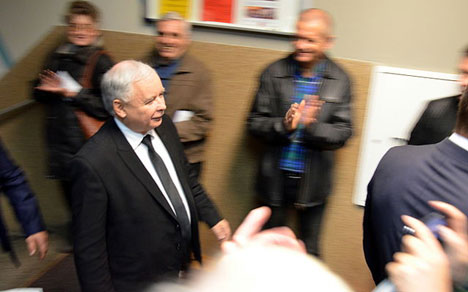
Since the collapse of Novi Sad’s train station in November, student-led protests have erupted across Serbia, inspiring a nationwide movement against corruption.
In terms of prompting domestic and foreign concern over the rise of illiberal democracy in the European Union, the new Polish government has almost outdone the Hungarian governments of the past six years. Cas Mudde considers the likelihood of EU sanctions against both Poland and Hungary.
There is no denying that 2015 was a great year for Viktor Orbán, the illiberal prime minister of Hungary, who made the most of Europe’s tragedies to transform himself from political pariah to ideological leader. While Time chose his nemesis, German chancellor Angela Merkel, as Person of the Year, driven by convention and wishful thinking it seems, Politico declared
“the conservative subversive” the most influential person in the European Union.
Although Merkel remains much more powerful than Orbán within Europe, I would still argue that 2015 went to the Mighty Magyar. While Merkel was at the centre of both major crises last year, i.e. the Greek economic crisis and the refugee crisis, she was only partially successful in pushing through her position – both times being abandoned by several EU leaders and being undermined from within the Union, particularly by her increasingly (far) right Bavarian “ally”, the Christian Social Union (CSU).
In contrast, Orbán started the year in the margins, being increasingly criticized, though never sanctioned, for his illiberal policies in Hungary. When he used the terrorist attack on Charlie Hebdo, in January 2015, to start an ideological attack on multiculturalism in Europe, he was scolded. Similarly, his authoritarian stand against refugees in Hungary initially received more critique than support, particularly when he started to build a fence, but this changed quickly.
In October he received applause at the Madrid Congress of the European People’s Party, the most powerful political group within the EU, and after the traumatic terrorist attacks in Paris the next month politicians from across the continent joined his campaign against refugees, linking them to the terrorist attacks.

Jaroslaw Kaczynski greeted by PiS supporters, Bielsko-Biala, 19 October 2015. Photo: Silar. Source: Wikimedia
However, Orbán’s biggest win seemed to be the return to power of the right-wing populist Law and Justice (PiS) in Poland. Its (real) leader, Jaroslaw Kaczynski, was one of the first official fans of Orbán, declaring his “Budapest Model” the inspiration of PiS as far back as 2011.
However, just like Fidesz had done in 2010, when it returned to power with a constitutional majority, PiS ran a fairly moderate and vague campaign, merely attacking the liberal governmental party Civic Platform (PO) and promising a lot to as many Poles as possible. It had even moved Kaczynski into the background, running the presidential elections with (now president) Andrzej Duda and the parliamentary elections with (now prime minister) Beata Szydo.
Since coming to power, PiS has thrown off its moderate sheep clothes and shifted with full force into radical right mode. It appointed controversial politicians, despite promising not to do so, cancelled the appointment of Constitutional Court judges, and has pushed for a complete politicization of the state media. In short, PiS is trying to do in six months what Orbán has achieved in six years. However, Poland is not Hungary, and the authoritarian moves have led to strong push-back from both domestic and foreign actors, which could threaten the “Budapest Model” not just in Poland but also in Hungary.
The most important difference between the situations in Poland and Hungary is that PiS does not have a constitutional majority. Although Orbán introduced illiberal measures in the 2010-2014 period, he did so with a democratic mandate, i.e. a constitutional majority in the mono-cameral parliament. Although the PiS can at times rely on support of the idiosyncratic, right-wing Kukiz’15 party, its democratic mandate is much weaker than that of Fidesz.
A second important difference is that Poland does have a strong opposition party, the liberal PO, which has also a strong voice in Europe – its former leader Donald Tusk is the current EU president. Where Orbán has faced a weakly organized opposition, frustrated by petty infighting within the broader social democratic camp, Kaczynski is confronted with a broad coalition of oppositional forces, as seen in large demonstrations against the new media law across Poland earlier this month. Importantly, this opposition has a voice in the Sejm and Senate, most notably through PO.
The third major difference is that Poland is too big to ignore for the EU and US. Whereas Hungary is a small country, slightly isolated by its complex and unique language, Poland is often seen as the bellwether of Central and Eastern Europe. What happens in Poland today, will happen in the rest of the region in a few years. Consequently, both the EU and the US responded fiercely against similar, though much less far-reaching, authoritarian trends during the first PiS government, between 2005 and 2007.
A fourth and final major difference is that PiS is a member of the European Conservatives and Reformists (ECR), a soft Eurosceptic transnational federation that has little political clout in Brussels. This is in sharp contrast to Fidesz, which is a member of the powerful European People’s Party (EPP), which has successfully shielded Orbán from EU sanctions in the past years. The recent developments in Poland are creating a dilemma for the EPP, as the main opposition party in that country, the PO, is also an EPP member. How to criticize the Budapest Model in Warsaw but not in Budapest itself?
Consequently, the success of the PiS in Poland could turn out to be a poisoned chalice for Orbán. The new Polish government has already raised almost more domestic and foreign concern over the rise of illiberal democracy within the EU than the Hungarian governments have done in the past six years.
This is unlikely to change, particularly because Kaczynski is a much less skillful politician than Orbán, who knows how to confuse and pamper his foreign critics. Most importantly, the PiS government could split the EPP, which will finally open up the way to EU sanctions of both Poland and Hungary.
Published 19 January 2016
Original in English
First published by openDemocracy / Can Europe make it?, 12 January 2016
Contributed by openDemocracy © Cas Mudde / openDemocracy / Eurozine
PDF/PRINTSubscribe to know what’s worth thinking about.

Since the collapse of Novi Sad’s train station in November, student-led protests have erupted across Serbia, inspiring a nationwide movement against corruption.

The Second World War no longer serves as a history of the western European present. The current era is marked by a different set of problems, not least the fading appeal of the model of democracy installed after 1945.